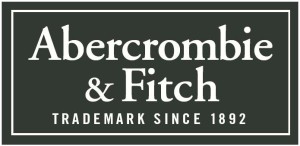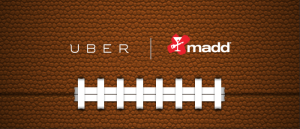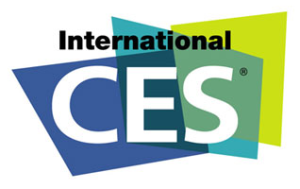As I write this, I am sitting in my local Starbucks. It’s a typical morning, and the usual suspects are here. Older intellectuals debating local politics, parents with toddlers discussing the best spot for swim lessons, and workers typing away on laptops in their office away from office. Everyone is doing their thing.
You know what they’re not doing? Discussing race relations.
Shocking, considering that just last week the Starbucks company decided that was exactly what we were going to talk about. By teasing with a full page ad in the New York Times, touting online, and scrawling a hashtag on cups, Starbucks – in partnership with USA Today – launched its Race Together campaign with high hopes.
So far the response has been less than grande.![102512229-Race_Together_[4].530x298](http://www.klcpr.com/wp-content/uploads/2015/03/102512229-Race_Together_4.530x298-300x169.jpg)
In theory, the Race Together campaign was going to represent the company’s active participation in a national discussion on race relations, a hot button topic which has been enflamed by events from Staten Island to Ferguson to Oakland. Starbucks CEO Howard Schultz told shareholders at the company’s annual meeting last week that the initiative’s intention was pure, driven by the need for publicly held companies to step up on such issues. Shultz’s presentation was echoed by musical artist Common and punctuated by finale performance of “Hallelujah” by Jennifer Hudson.
Critics, however, called foul on a company they said was obviously using racial tensions to draw attention and increase the bottom line. Others pointed to a blatant attempt to increase cultural relevance – just another shot fired in the ultra-competitive specialty coffee wars. In 4,700 Starbucks locations across the country, baristas are being encouraged to talk to customers about race relations, but details remain sketchy as to what type of training was provided them in preparation.
On social media, the backlash has been brutal. Video parodies of baristas talking to customers have already popped up, and the company’s vice president of global communications reportedly chose to temporarily delete his Twitter account to dodge the negative onslaught. Customers aren’t just rejecting the campaign, they are turning the spotlight on the company itself, and in some cases, its competition:
RockPrincess @Rockprincess818: Why doesn’t CEO Schultz have many Starbucks in inner city communities…Typical liberal hypocrite always blaming someone else.
James Parkley @jnarls: Starbucks: Nothing Says #RaceTogether Like Only Hiring 3 People of Color Out of 19 Executives.
ConservativeBlackMan @Thomasismyuncle: Stopped at Dunkin Donuts this morning, got my coffee and a croissant sandwich and no lecture on my victimhood… so winning!
What went wrong?
Starbucks has never shied away from hot issues. In October 2013, Schultz introduced a petition during the government shutdown to push Congress to pass a budget deal. That same year, in response to gun rallies, the company placed print ads urging patrons to keep their firearms out of stores. They have also shown open support for veterans and for marriage equality.
But here’s the difference.
Those efforts were put forth by the company as a whole, and didn’t directly impact the customer experience. If, as a customer, you feel strongly about Shultz’s stance on a given topic, you were welcome to simply take your business elsewhere. Skip Starbucks in favor of a competing store, post about it on social media, say your peace and move on. Conversely, studies show that consumers are increasingly drawn to businesses who support social causes on a corporate level, which makes walking through the door enough of a statement for most.
By taking the Race Together campaign to the boots on the ground level, pushing baristas and customers into a blind date of conversation, Starbucks introduced an aggressive element which has been unappreciated, to say the least. One business consultant quoted in the New York Times put it best, saying that “the effort [clashes] with consumer’s wishes – to order, wait silently, and leave the shop within minutes.”
The Race Together story represents basic key considerations for any PR campaign aimed at starting a conversation:
- Know why your customers choose you and figure out how you can serve that key demographic, bringing in cause related messaging in ways that make sense.
- Decide in advance what your company’s stance will be. Backing a cause is acceptable and even beneficial at times in helping a brand grow, but associating afterwards puts consumers in an unexpected partnership and can backfire.
- Know where the line of polite conversation ends and the risk of controversy begins. Decide which side of that line your company should be on.
Starbucks makes good coffee, offers a variety of products to suit any taste, and creates a comfortable environment conducive to working, socializing, or simply killing time. Dive into a race relations discussion, prompted by a hashtag scrawled on my cup? No thanks. As PBS NewsHour co-anchor Gwen Ifill wrote in a tweet, “Honest to God, if you start to engage me in a race conversation before I’ve had my morning coffee, it will not end well.”
There is no arguing the fact that Starbucks started a conversation. But, like someone who ordered a latte and was served a frappucino, it was not the one they wanted.
If you are thinking of what strategies might work best for your own PR campaign, we would love to help. Together, we can conceptualize, target, and craft your message to benefit your customer base and your bottom line in a synergistic way. Give us a call at (203) 762-8833 so we can start our own conversation.
– BML
 Sound like an irate neighbor yelling over to the house party next door? Nope. Just Abercrombie & Fitch’s new leadership making a few changes.
Sound like an irate neighbor yelling over to the house party next door? Nope. Just Abercrombie & Fitch’s new leadership making a few changes.![102512229-Race_Together_[4].530x298](http://www.klcpr.com/wp-content/uploads/2015/03/102512229-Race_Together_4.530x298-300x169.jpg)

